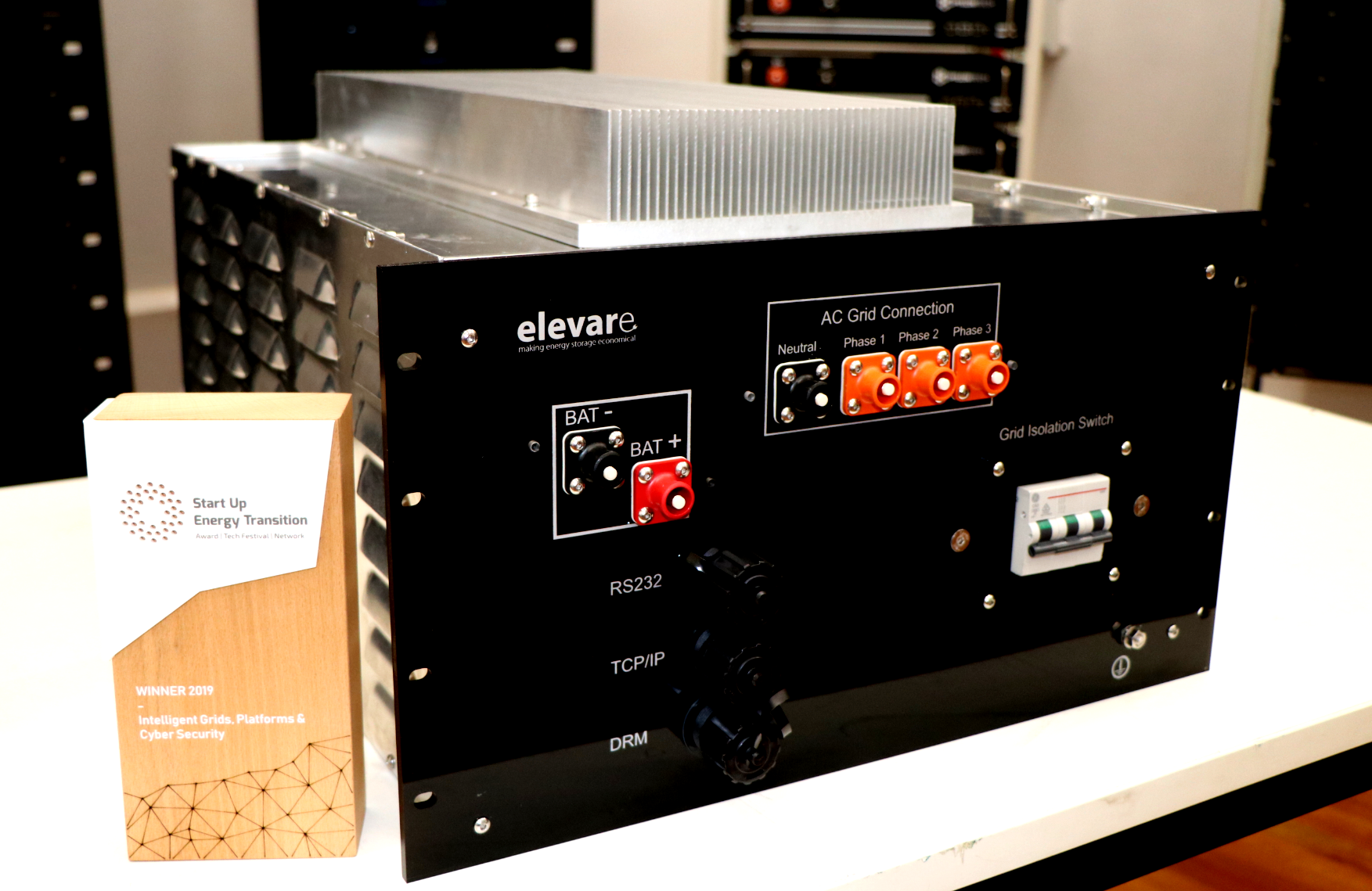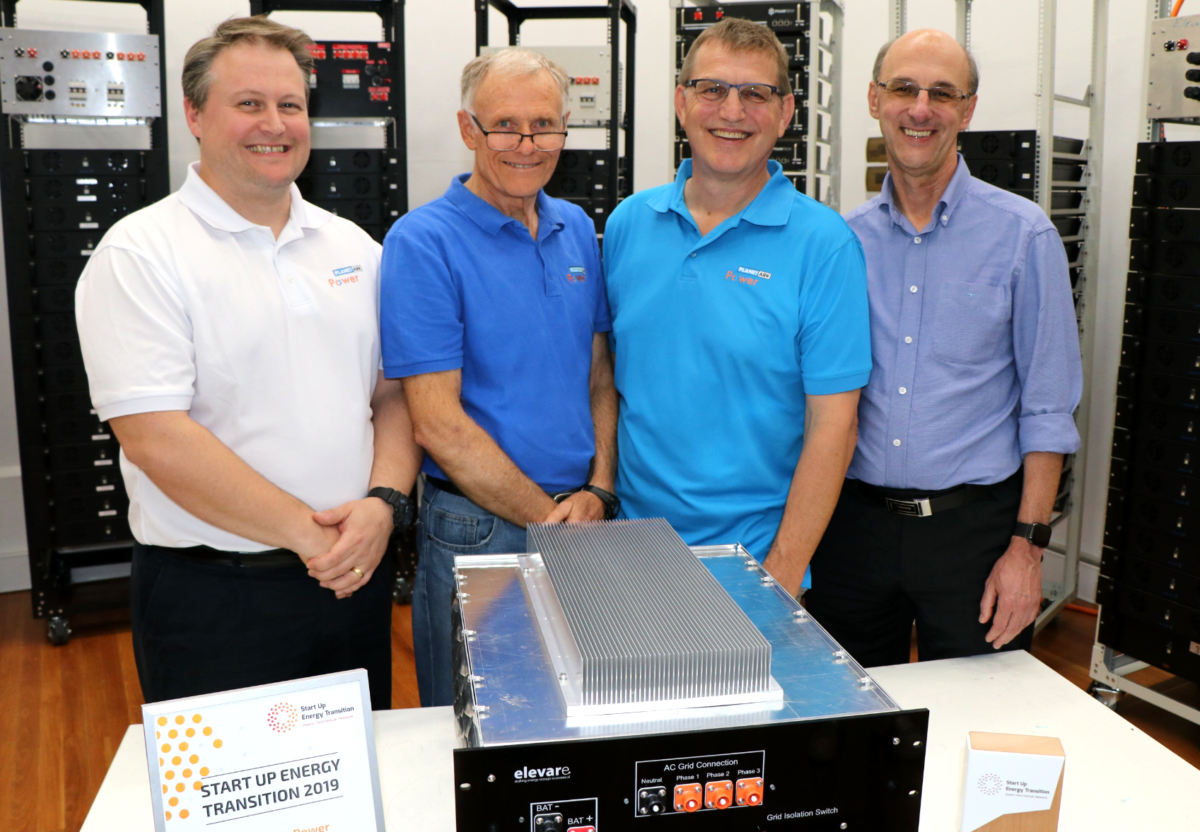pv magazine Australia: The great innovation of Planet Ark Power’s smart voltage management systems is that solar energy can be distributed to the grid without the risk of voltage spikes or grid instability, how does the technology work?
Planet Ark Power: Developed over six years, Planet Ark Power’s technology fixes voltage problems that cause grid instability from both surplus energy from rooftop solar panels and excess demand on the network. Essentially, high amounts of Distributed Energy Resources (DER) such as rooftop solar, feeding back into the grid over-volt the network. Our technology smartly increases or decreases the voltage on the network through dynamic reactive power control. A compact and robust behind-the-meter solution, it maintains voltage within statutory limits using VAR management.
Similar to how a water filter captures particulate matter and delivers reliable water, our voltage management technology filters the disruptive harmonics on the grid to deliver clean and reliable power.
Overcoming the voltage instability problem unlocks the full potential of DER, such as commercial-scale rooftop solar to flow to the grid by enhancing its holding capacity by up to 13 times. It facilitates the creation of urban solar farms which Planet Ark Power believes is the best opportunity to create a clean energy world at the least cost to the economy.
This is game-changing. Our technology not only increases energy savings; it turns energy costs into recurrent revenue streams for commercial building owners by enabling unlimited export of clean energy into the grid, thereby massively improving returns on investment.
Why is it that you believe Australia represents the ‘ground-zero’ of large-scale voltage disruption problems?
Simply because Australia has the highest residential rooftop solar penetration in the world. In Queensland, which is popularly referred to as the sunshine state and where Planet Ark Power is based, rooftop solar penetration is at 35% of all residences. South Australia has reached similar coverage with Australia’s two largest states – Victoria and New South Wales – not that far behind.
Rooftop solar (especially residential) has boomed since the mid-2000s due to the range of incentives provided by state governments to accelerate the adoption of clean energy in Australia. Even though incentives, such as generous feed-in tariffs, have been significantly wound back, the economics of installing rooftop solar systems and inverters continues to dramatically improve, ensuring it remains a popular choice in an environment of ever-increasing energy prices.
In Queensland, voltage management challenges began to emerge about 10 years ago in some suburbs with high penetration rates of residential rooftop solar. In response, network operators opted to place a range of restrictions on the export of surplus solar energy back into the grid and to invest in expensive infrastructure upgrades further adding pressure to already skyrocketing energy prices.
These restrictions have also had the consequence of severely curtailing investment in large-scale rooftop solar installations in the commercial and industrial sectors since the energy generated can only be used on-site. With Planet Ark Power’s technology, these restrictions can now safely be overcome and at no capital cost to governments, grids, and taxpayers.
 We are now seeing the beginnings of curtailment to large-scale solar in some areas of Australia because of bottlenecks and other grid-related stress issues, not to mention over 4.5 GW of renewable energy that is queued up and waiting to be accommodated on the grid. In fact, many of these projects looking down the barrel of long-term delays and financial unviability. Can Planet Ark Power provide solutions to these large-scale voltage-to-grid problems?
We are now seeing the beginnings of curtailment to large-scale solar in some areas of Australia because of bottlenecks and other grid-related stress issues, not to mention over 4.5 GW of renewable energy that is queued up and waiting to be accommodated on the grid. In fact, many of these projects looking down the barrel of long-term delays and financial unviability. Can Planet Ark Power provide solutions to these large-scale voltage-to-grid problems?
The simple answer is yes, our technology can overcome many of the technical and financial problems of large-scale generation. From Planet Ark Power’s experience, urban solar farms provide an economical solution to large-scale solar farms by increasing the capacity of low voltage networks to accept much more distributed energy than has been the case to date.
Generally, urban solar farms have a cost of energy lower than that from a solar or wind farm. This is because of the high costs to transport energy over long distances. Urban solar farms use the rooftops and electrical urban infrastructure already in place, making it the optimum, cost-efficient solution for society.
Our technology can also be installed at the source of any distributed energy resource, such as micro-wind.
There are other technologies that can control how and when PV systems export or send excess energy into the grid, for instance Allume Energy’s SolShare technology. Can Planet Ark Power’s technology work in tandem with others?
Yes, our technology is compatible with any control infrastructure or building management system. It can enhance their performance while it carries out core functionalities enabling full potential export into the grid. This is the key to setting up functional and bankable Virtual Power Plants (VPPs) across a myriad of circumstances where large commercial rooftops are available for surplus clean energy export.
How does Planet Ark Power’s behind-the-meter technology interact with battery storage systems?
Our technology integrates seamlessly with battery storage systems. When surplus clean energy is available, there are two options – to place it in energy storage or export it back into the grid. When combined with battery storage, our technology fixes the voltage peaking problems experienced in the late afternoons and evenings, lowers network demand and exports intelligently to the grid with reactive power management and control.
Voltage problems severely reduce the return on investment of batteries. With Planet Ark Power’s voltage management technology, the effectiveness of VPP batteries dramatically increases. VPPs are critical to decarbonising the electricity grid. As the performance continues to improve and prices come down, they will inevitably be a fast and cost-effective alternative to coal and gas power plants.
Planet Art Power’s namesake, Planet Ark, is a strong supporter of the business, how did this partnership come about?
Planet Ark is one of Australia’s leading and most respected environmental organisations. They were seeking a suitable partnership that would further one of their principle organisational pillars – “to support a low carbon lifestyle”.
Back in 2017, Planet Ark recognised that the solutions offered by a small start-up based in Brisbane called GoZERO Energy, went beyond just installing more rooftop solar panels and could make a major contribution to decarbonise the entire electricity grid. For Planet Ark, this was the perfect partnership and GoZERO Energy was rebadged as Planet Ark Power and rest – as they say – is history.
What impressed Planet Ark most was how our behind-the-meter technology could upgrade and turn today’s one-way grids into dynamic distributed clean energy grids cost-effectively while significantly lowering CO2 emissions generated from the energy sector.
The ‘Intelligent Grids, Platforms and Cyber Security’ award at the Start Up Energy Transition (SET) Awards in Berlin is a pretty handy piece of recognition. What does it mean for Planet Ark Power’s adoption outside of Australia?
Winning the Start-Up Energy Transition Award in Germany was not just a recognition for our commitment to solving a significant barrier to transitioning to decarbonised and distributed electricity grids, it has given team Planet Ark Power the confidence to aim even higher and continue to innovate.
We are receiving immense interest from Europe and the United States since the SET Awards. Applicable globally, our technology optimises the capacity of the grids and networks to accept up to 13 times more clean, distributed energy without the need for massive capital investment in new infrastructure.
Up next for Planet Ark Power is exhibiting our grid-transforming technology to the global energy community in September at the World Energy Council’s 24th World Energy Congress in Abu Dhabi.
This content is protected by copyright and may not be reused. If you want to cooperate with us and would like to reuse some of our content, please contact: editors@pv-magazine.com.









What’s the range for the increment in LCOE of a solar if the solution from PLanet Ark is used?